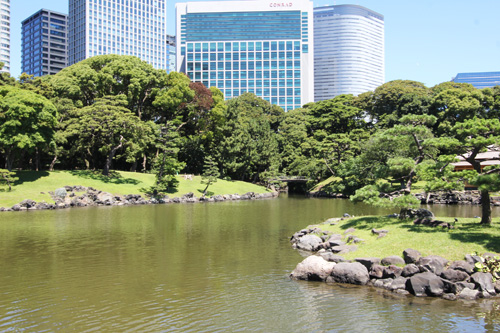Garden : Temples
- Published 2010.7.13
Japanese gardens have developed under the influence of China and Korea since the seventh century. Since then, JapanŌĆÖs gardens have changed along with JapanŌĆÖs architecture and religion ideology. An example of this is the Jodo Garden, which was made in the middle of the Heian period, around the tenth century. With a large pond with an island and an elevated bridge, the Jodo Garden has attempted to establish Sukhavati (pure paradise), on earth.
From the Kamakura period, it became popular to recreate a part of nature inside the garden by symbolically representing the true nature. Dry landscape gardens, which used arranged stones and white sand to recreate the color of water without actually building a pond, came into existence in the Muromachi period (thirteenth century).
Gardens
Japanese gardens are traditional gardens that resemble miniature idealized landscapes in a highly abstract and stylized way. These gardens convey the interpretations of the ideal natural landscape that was perceived by the Japanese in the cultural, social, and environmental mirror of the times.

